Test Crosses
Test crosses are crosses used to determine what genotype an organism, such as a plant, has. The plant with the unknown genotype must have the dominant phenotype. We do not know whether the plant is homozygous dominant or heterozygous, so we must cross it with a homozygous recessive plant. Once the cross is performed, calculate the ratio of genotypes in the offspring. This ratio can be used to determine what genotype the plant has.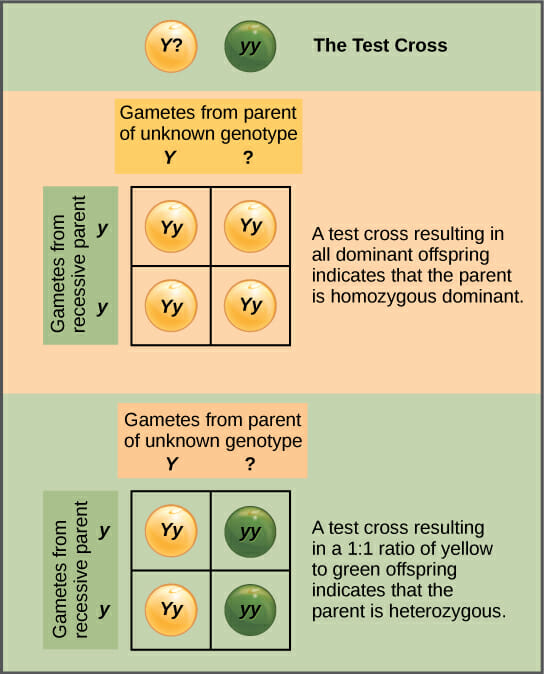
Incomplete Dominance
Unlike complete dominance, incomplete dominance is when an organism with both a dominant and recessive allele has a phenotype that is a combination of both genotypes. For example, snapdragons have one allele for a red flower (R) and another allele for a white flower (r). A snapdragon that has the genotype Rr will have pink flowers, an intermediate of white and red flowers.
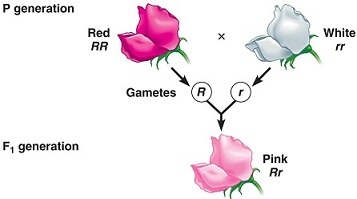
Codominance
Codominance is an inheritance pattern in which a heterozygous organism displays traits related to both alleles at the same time. An example of codominance is a plant that has either red or white flowers. Red is represented by the R allele and white is represented by the r allele. A plant that has the Rr genotype has flowers where some of the petals are red and some are white.

Multiple Alleles
In genetics, there are some cases where you may want to examine more than two alleles. An example of this is human blood types (A, B, and O). Human blood types have the alleles IA, IB, and i. The alleles IA and IB are codominant and i is recessive. The blood types and their corresponding genotypes are seen below:
- Blood Type A - IAIA and IAi
- Blood Type B - IBIB and IBi
- Blood Type AB - IAIB
- Blood Type O - ii
Blood type A contains proteins with the A sugar attached, blood type B contains proteins with the B sugar attached, blood type AB contains some proteins that have A attached and some that have B attached, and blood type O has proteins with no sugar attached.
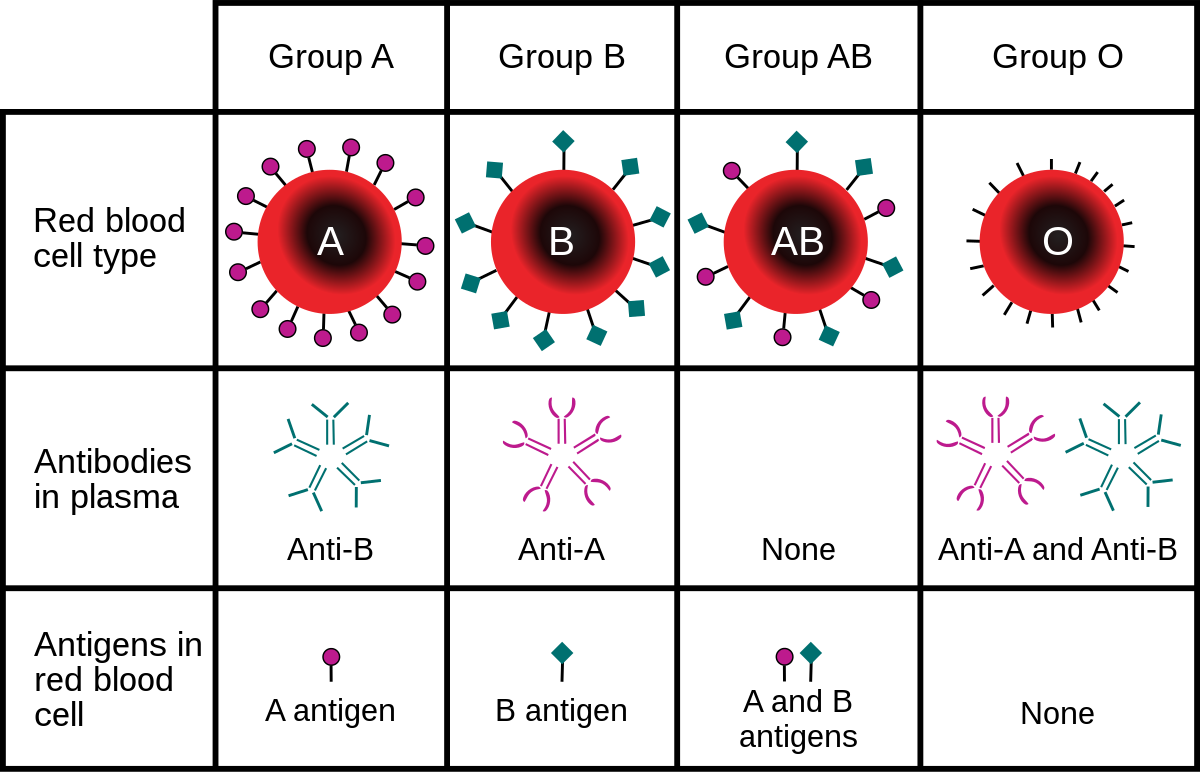
Polygenic Inheritance
Some traits have many varieties. Skin color, for example, can be anything across a range of colors. This continuous variation results from polygenic inheritance, which is the combination of many genes to make a single phenotype.
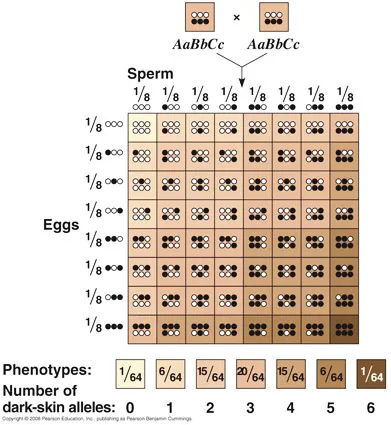
Linked Genes
Usually, genes are located on different chromosomes, such as for seed color and seed texture of pea plants. When genes are located on the same chromosome, they are called linked genes. Linked genes cannot segregate independently because they are physically connected on the same chromosome, so the Mendel's laws do not apply to linked genes.
Fruit flies is a common example of linked genes. Body color (B for gray and b for brown) and wing structure (V for normal and v for vestigial) are linked on the same chromosome. Since the two genes are linked, the only two gametes are BV and bv.
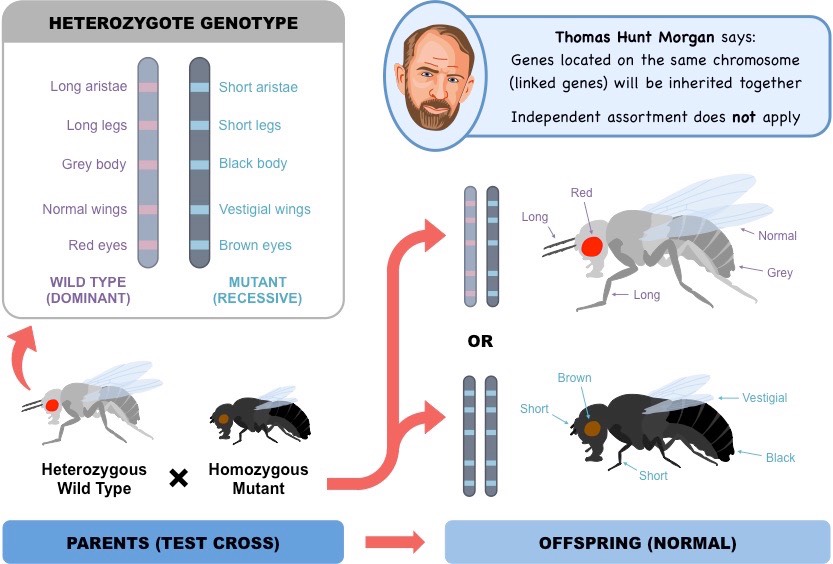
Depending on the distance between the linked genes on a chromosome, the recombination frequencies can change. The larger the distance between two linked genes, the more likely they are to undergo recombination. Linkage maps show the sequence of genes on chromosomes and the distance, in map units, between the linked genes. Cytological maps show the true relative positions of these genes.
Sex Chromosomes and Sex-Linked Inheritance
Animals contain sex chromosomes, which are the X and Y chromosomes. All the other chromosomes are called autosomes. Males have one X and one Y chromosome, while females have two X chromosomes. Most sex linked genes occur on the X chromosome, but there are a few that can be transmitted through the Y chromosome. Since females inherit two copies of the X chromosome, they are less likely to have two recessive alleles and display a disability as compared to males, who only inherit one X chromosome. Carriers are individuals who carry one gene for a disease, but do not have the phenotype for the disease.
